Key takeaways:
- Customer personas are created from real data and insights, enhancing empathy and aligning marketing strategies with genuine customer needs.
- Involving cross-functional teams in persona development leads to a more comprehensive understanding of the audience.
- Continuous evolution of personas is essential to adapt to changing customer preferences and behaviors.
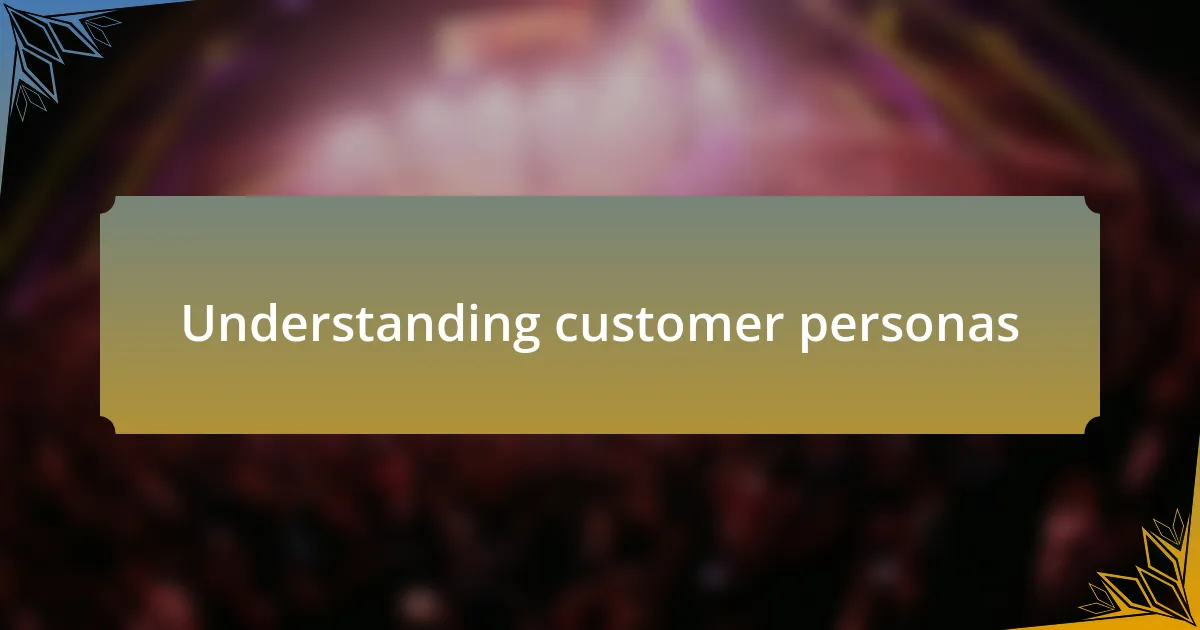
Understanding customer personas
Customer personas are fictional representations of your ideal customers, constructed from real data and insights about your existing audience. When I first started developing customer personas for my business, I was amazed at how these profiles helped to clarify who I was truly targeting. Suddenly, marketing wasn’t just an abstract idea; it became a conversation with real people in mind.
Creating these personas involves gathering data through surveys, interviews, and observations. Once, I delved deep into customer feedback, and I was struck by how much emotion lay behind the words—customers shared their frustrations and dreams with me. This deep dive not only informed my personas but also enhanced my empathy for their experiences. Isn’t it fascinating how understanding the emotional drivers of your audience can transform your outreach strategies?
I found that incorporating specific demographics, behavioral traits, and pain points into my customer personas made the whole process feel more tangible. For instance, knowing a persona’s hobbies or shopping preferences enabled me to tailor my messaging to resonate more. Have you ever thought about what might happen if you truly understand the ‘why’ behind your customer’s decisions? It opens a newfound clarity that often leads to effective engagement strategies, aligning your business goals with genuine customer needs.
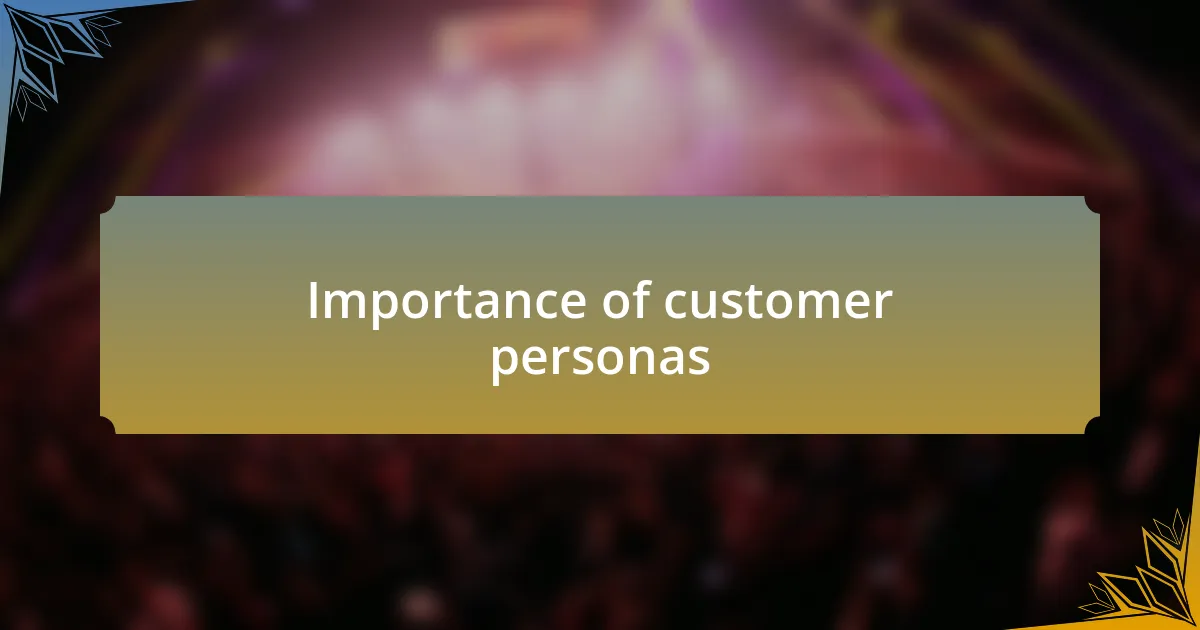
Importance of customer personas
Understanding the importance of customer personas fundamentally reshapes how we connect with our audience. I recall a campaign where I launched a new product without deeply considering my customer personas. The feedback was eye-opening—disappointment washed over me as I realized I had misjudged their preferences. It was a tough lesson on the necessity of knowing precisely who you’re speaking to.
Customer personas serve as a compass guiding our marketing strategies. When I tailor my content toward these personas, I can almost hear their voices as I write. Shouldn’t our marketing be a conversation rather than a monologue? I find that this mindset not only enhances engagement but fosters genuine relationships, ultimately driving loyalty.
Going beyond demographics, emotional insights gleaned from customer personas can significantly influence product development and service improvements. For instance, understanding that a key persona values sustainability led me to innovate with eco-friendly packaging in my offerings. This shift wasn’t just a business decision; it felt personally rewarding to meet my customers’ values. Don’t you see how customer personas unveil opportunities that resonate not only with our audience but also with our core mission?
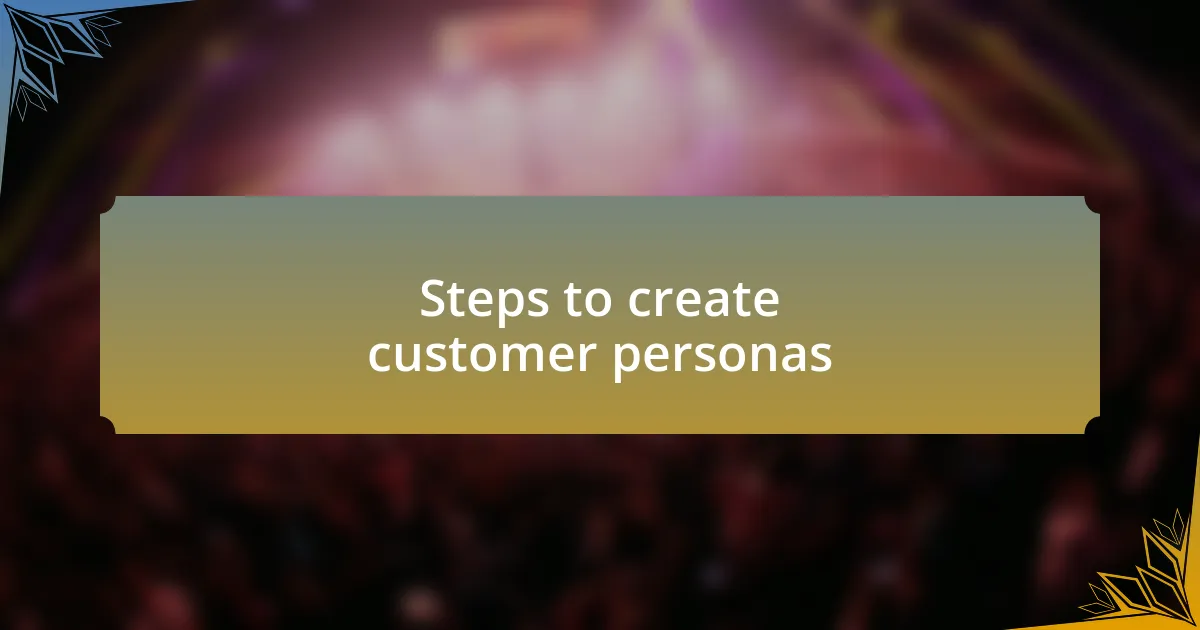
Steps to create customer personas
Creating effective customer personas starts with thorough research. I always begin by diving into existing customer data. Analyzing purchase history and demographics helps identify patterns—sometimes, I stumble upon unexpected trends that truly shape my understanding of who my customers are. Have you ever been surprised by what the data reveals?
Next, I engage directly with customers through surveys and interviews. Just recently, I organized a focus group to discuss their experiences with a product. The raw honesty during those sessions was enlightening. I remember one participant sharing how a feature I thought was insignificant was actually a game-changer for their experience. It’s moments like these that help refine those details in my personas.
Finally, I synthesize all the insights and create detailed profiles. I often feel a sense of accomplishment when I see these personas come to life on paper. In my experience, the more vivid you can make each persona—complete with names, backgrounds, and motivations—the easier it is to craft messages that resonate. Isn’t it fascinating how this clarity transforms our marketing approach?
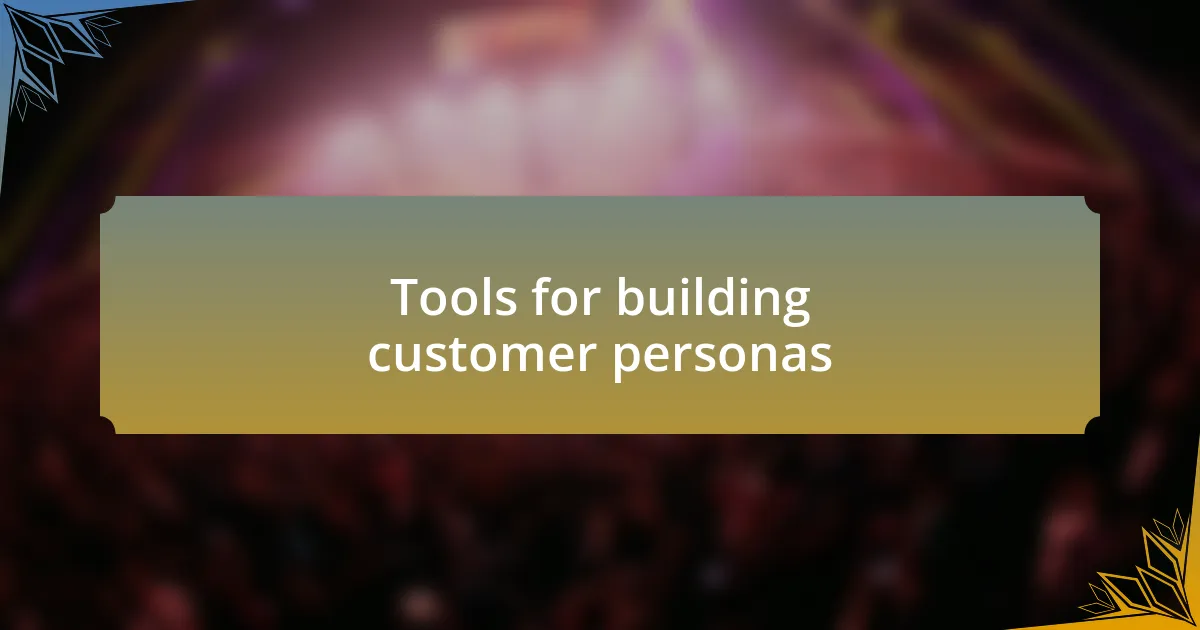
Tools for building customer personas
When it comes to tools for building customer personas, I can’t emphasize enough the value of analytics platforms like Google Analytics or HubSpot. These tools are fantastic for diving deep into customer behavior. I remember using Google Analytics to uncover which pages visitors spent the most time on; that insight alone redefined my understanding of customer interests and engagement. Have you ever experienced that moment when data shifts your perspective completely?
Another powerful tool I’ve found useful is social media listening software, such as Hootsuite or Brandwatch. These platforms allow you to monitor customer conversations and sentiments in real-time. I once discovered through social media discussions that a common pain point among my customers was a lack of product tutorials. This insight didn’t just help shape personas; it also led to the creation of helpful content that boosted customer satisfaction. How do you currently listen to your customers?
Lastly, customer relationship management (CRM) systems like Salesforce or Zoho are invaluable for storing and analyzing customer data. They enable you to segment your audience effectively, making it easier to tailor personas with precision. From my experience, integrating these tools into your persona development process can uncover layers of information you might not even know exist. Isn’t it thrilling to think about how much each of these tools contributes to a richer understanding of your audience?

Analyzing customer persona data
Understanding how to analyze customer persona data is crucial for forming a well-rounded view of your audience. I’ve found that segmenting data based on demographics, behaviors, and motivations can illuminate distinct trends that inform tailored marketing strategies. Have you ever noticed how a single demographic tweak in your analysis can lead to major shifts in your outreach success?
One insightful experience I had involved collecting feedback through surveys paired with data from CRM systems. When I cross-referenced the feedback with behavioral data, it became clear that certain customer segments craved more personalized engagement. This revelation not only improved our campaigns but also fostered a deeper connection with our audience. Isn’t it amazing to think about how analyzing this data can create a meaningful dialogue with customers?
I often rely on comparative analysis to gauge the effectiveness of different personas. By examining engagement metrics across various segments, I’ve been able to pinpoint which personas resonate most with our messaging. I remember the satisfaction when I managed to enhance engagement rates just by refining the touchpoints within those personas. How does your analysis process reveal unique insights that can pivot your customer experience?
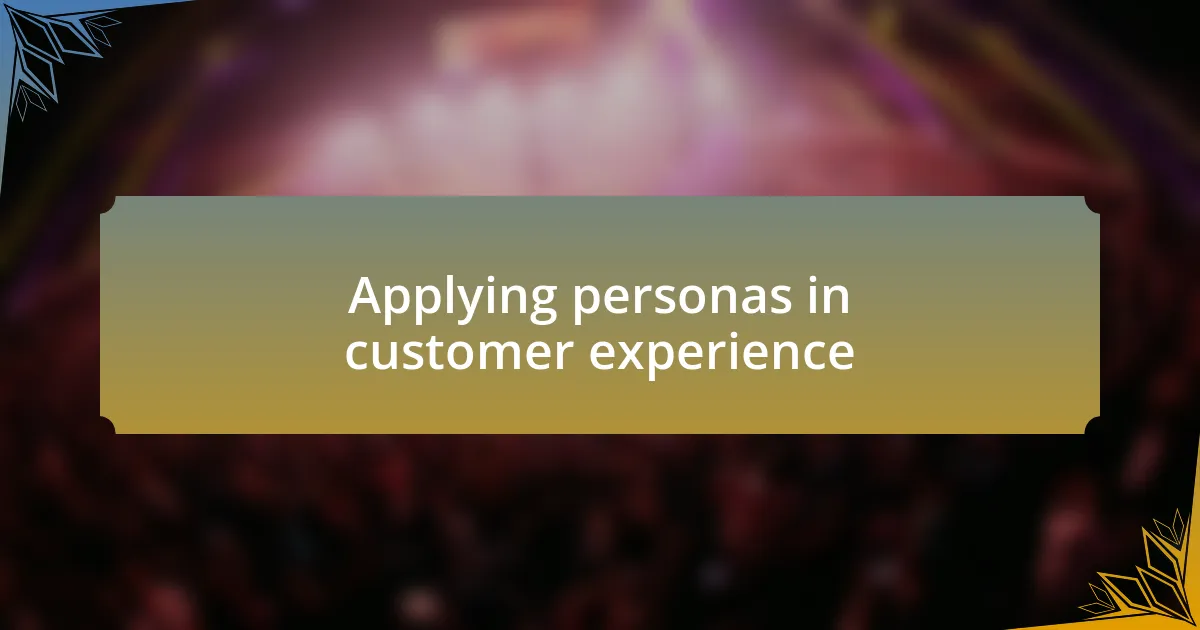
Applying personas in customer experience
Applying personas in customer experience requires a strategic translation of data into actionable insights. I recall a project where we created tailored customer journeys for each persona. This approach allowed us to craft specific touchpoints that not only met customer needs but also exceeded their expectations. Have you ever considered how aligning your messaging with customer personas can foster brand loyalty?
In one scenario, we discovered that one of our personas preferred visual content, while another thrived on in-depth articles. I adjusted our content strategy accordingly, producing a mix of infographics and detailed guides. It was fascinating to see how quickly engagement surged after these adjustments. Does it surprise you how nuanced shifts in content can resonate differently across personas?
Moreover, the introduction of personas into our service strategy immensely impacted customer interactions. I vividly remember a case where training our support team to recognize these personas transformed their approach. Instead of a one-size-fits-all response, they began tailoring their assistance based on individual customer backgrounds. This shift turned frustrating interactions into memorable experiences. Isn’t it rewarding to see how effectively understanding your audience can change the entire customer journey?

Lessons learned from my process
Creating effective customer personas taught me the value of empathy. I remember sitting in a focus group session, listening to customers share their stories. Their emotions and frustrations painted a vivid picture, reminding me that behind every data point is a real person with unique experiences. Have you ever felt that connection with your customers? That moment made me realize how vital it is to approach persona-building with genuine understanding.
During my journey, I discovered that involving cross-functional teams could significantly enhance our personas. Early on, I included our marketing, sales, and customer support teams in the persona creation process. It was remarkable to see how each team’s unique perspective filled in gaps I hadn’t considered. This collaborative effort not only strengthened the personas but also fostered a deeper company-wide commitment to understanding our audience. Have you thought about how diverse insights can shape a more comprehensive view of your customers?
One of the most striking lessons was the need for continuous evolution. Initially, I treated personas as static entities, but I learned the importance of revisiting and updating them regularly. After a few months, I noticed shifts in customer preferences and behaviors. It struck me that as our audience changes, so should our understanding of them. Don’t you think keeping pace with those changes is crucial for sustained success? Embracing this mindset transformed how I approached customer personas, making them a dynamic tool instead of a one-time project.